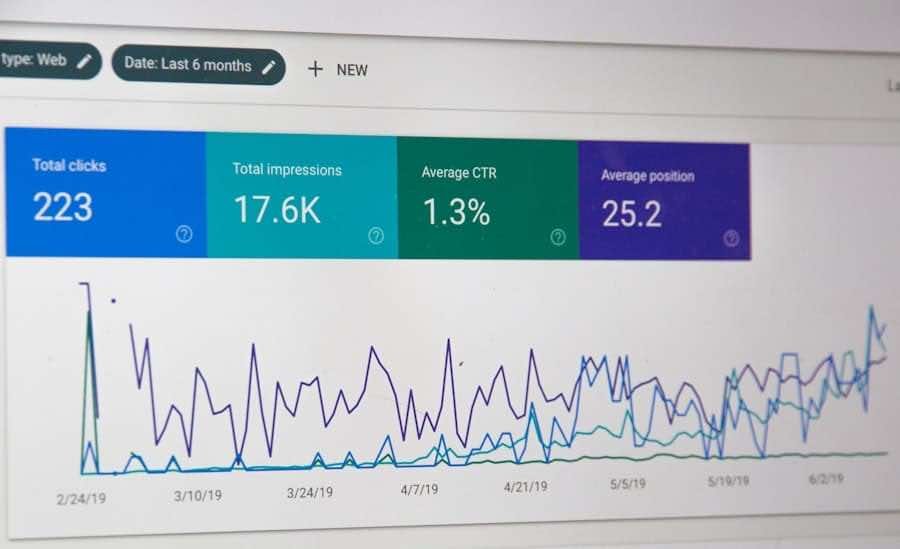Whitespace analysis is a strategic tool that has gained prominence in the business landscape, particularly as companies seek to innovate and differentiate themselves in increasingly competitive markets. At its core, whitespace analysis involves identifying unoccupied or underutilised areas within a market or industry where opportunities for growth and development exist. This concept is not merely about finding gaps in the market; it encompasses a broader understanding of customer needs, emerging trends, and potential areas for product or service innovation.
As businesses strive to remain relevant and responsive to changing consumer demands, whitespace analysis serves as a critical framework for uncovering new avenues for expansion and profitability. The term “whitespace” itself evokes imagery of blank spaces on a page, suggesting potential and possibility. In the context of business, these blank spaces represent unmet needs or overlooked segments that can be targeted for new offerings.
By systematically analysing these areas, organisations can develop strategies that not only enhance their market position but also foster long-term sustainability. The increasing complexity of consumer behaviour and the rapid pace of technological advancement make whitespace analysis an essential component of modern business strategy.
Summary
- Whitespace analysis is a strategic tool used to identify untapped market opportunities and gaps in the current business landscape.
- Understanding the concept of whitespace in business involves recognising areas where a company is not currently competing or offering products or services.
- Whitespace analysis is important in business strategy as it helps businesses to innovate, differentiate, and stay ahead of the competition.
- Conducting whitespace analysis involves market research, customer feedback, and a thorough evaluation of industry trends and competitors.
- Utilising whitespace analysis for market expansion involves developing new products or services, entering new market segments, and targeting new customer demographics.
Understanding the concept of Whitespace in Business
Whitespace in business refers to the areas within a market that are not currently being served or are inadequately addressed by existing products or services. This can manifest in various forms, such as demographic segments that have been ignored, geographical regions lacking specific offerings, or even product features that have not yet been explored. Understanding whitespace requires a deep dive into market research, consumer behaviour analysis, and competitive landscape assessments.
It is about recognising that the market is not a static entity; rather, it is dynamic and constantly evolving, presenting new opportunities for those willing to look beyond conventional boundaries. To illustrate this concept, consider the example of the smartphone industry. Initially dominated by a few key players, the market has seen significant whitespace emerge as consumer preferences shifted towards features like camera quality, battery life, and user interface design.
Companies that recognised these shifts early on were able to carve out niches by offering specialised devices tailored to specific user needs. For instance, brands like OnePlus and Xiaomi capitalised on the demand for high-performance smartphones at competitive prices, effectively filling gaps left by established giants. This demonstrates how understanding whitespace can lead to innovative product development and market penetration.
Importance of Whitespace Analysis in Business Strategy

Whitespace analysis plays a pivotal role in shaping effective business strategies. By identifying areas of opportunity, organisations can align their resources and capabilities with market demands, ultimately driving growth and enhancing competitive advantage. The importance of this analysis lies not only in its ability to uncover new markets but also in its potential to inform product development, marketing strategies, and customer engagement initiatives.
In an era where consumer preferences are rapidly changing, businesses that fail to conduct whitespace analysis risk becoming obsolete as they overlook emerging trends and unmet needs. Moreover, whitespace analysis fosters a culture of innovation within organisations. By encouraging teams to think creatively about potential opportunities, businesses can cultivate an environment where new ideas are welcomed and explored.
This proactive approach to identifying whitespace can lead to breakthrough innovations that redefine market standards. For example, companies like Airbnb and Uber have successfully leveraged whitespace analysis to disrupt traditional industries by recognising gaps in service delivery and consumer expectations. Their ability to innovate based on identified whitespace has not only transformed their respective markets but has also set new benchmarks for customer experience.
How to Conduct Whitespace Analysis
Conducting whitespace analysis involves a systematic approach that combines qualitative and quantitative research methods. The first step is to define the scope of the analysis by identifying the specific market or industry segment under consideration. This requires a thorough understanding of the current landscape, including existing competitors, customer demographics, and prevailing trends.
Once the scope is established, businesses can employ various research techniques such as surveys, focus groups, and data analytics to gather insights into consumer preferences and behaviours. After collecting data, organisations should analyse it to identify patterns and trends that indicate potential whitespace opportunities. This may involve segmenting the market based on different criteria such as age, income level, or geographic location to pinpoint areas where consumer needs are not being met.
Additionally, conducting a competitive analysis can reveal gaps in competitors’ offerings that can be exploited. For instance, if a competitor lacks a presence in a particular demographic segment or geographical area, this could represent an opportunity for a business to introduce tailored products or services.
Utilising Whitespace Analysis for Market Expansion
Whitespace analysis is particularly valuable for businesses looking to expand into new markets or diversify their product offerings. By identifying unserved or underserved segments within existing markets, organisations can strategically position themselves to capture new customer bases. This process often involves assessing market size, growth potential, and competitive dynamics to determine the feasibility of entering new areas.
For example, a company that primarily sells luxury goods may discover through whitespace analysis that there is a growing demand for affordable alternatives among younger consumers. By developing a new line of products that caters to this demographic, the company can effectively expand its market reach. Furthermore, whitespace analysis can guide businesses in developing strategic partnerships or collaborations that enhance their market presence.
By identifying complementary businesses operating in adjacent spaces, organisations can leverage each other’s strengths to create innovative solutions that address unmet needs. For instance, a health food brand might partner with a fitness app developer to create a holistic wellness programme that combines nutrition and exercise guidance. Such collaborations not only enhance product offerings but also broaden market access by tapping into each partner’s customer base.
Identifying Opportunities through Whitespace Analysis

Identifying opportunities through whitespace analysis requires a keen understanding of both current market conditions and future trends. Businesses must remain vigilant in monitoring shifts in consumer behaviour, technological advancements, and regulatory changes that could create new whitespace opportunities. For instance, the rise of sustainability as a consumer priority has opened up numerous avenues for companies willing to innovate around eco-friendly products and practices.
Brands that proactively engage in whitespace analysis can position themselves as leaders in sustainability by developing products that align with these emerging values. Additionally, leveraging advanced analytics tools can enhance the effectiveness of whitespace identification efforts. Data mining techniques can uncover hidden patterns within large datasets that may indicate potential opportunities for growth.
For example, analysing purchasing behaviour across different demographics may reveal that certain age groups are increasingly interested in plant-based diets. A food manufacturer could use this insight to develop new product lines targeting these consumers, thereby capitalising on an identified whitespace opportunity.
Incorporating Whitespace Analysis into Business Planning
Incorporating whitespace analysis into business planning is essential for ensuring that organisations remain agile and responsive to market changes. This integration begins with embedding whitespace considerations into strategic planning processes at all levels of the organisation. Leadership teams should prioritise regular reviews of market data and consumer insights to identify emerging opportunities and adjust their strategies accordingly.
By fostering a culture of continuous improvement and innovation, businesses can ensure that whitespace analysis becomes an integral part of their operational framework. Moreover, it is crucial for organisations to establish cross-functional teams dedicated to conducting ongoing whitespace analysis. These teams should comprise members from various departments such as marketing, product development, and sales to ensure a holistic approach to opportunity identification.
Regular brainstorming sessions can facilitate idea generation around potential whitespace opportunities while also encouraging collaboration across different functions within the organisation. This collaborative approach not only enhances creativity but also ensures that diverse perspectives are considered when evaluating potential opportunities.
Case Studies: Successful Implementation of Whitespace Analysis in Business
Several companies have successfully implemented whitespace analysis as part of their strategic initiatives, leading to significant growth and market differentiation. One notable example is Netflix, which transformed from a DVD rental service into a global streaming powerhouse by identifying whitespace opportunities within the entertainment industry. By analysing consumer preferences for on-demand content consumption and recognising the limitations of traditional cable television models, Netflix was able to pivot its business model effectively.
The company invested heavily in original content production based on insights gained from its audience data, allowing it to capture significant market share while redefining how consumers engage with media. Another compelling case is that of Tesla, which identified whitespace within the automotive industry by focusing on electric vehicles (EVs) at a time when traditional manufacturers were largely sceptical about their viability. Through extensive research into consumer attitudes towards sustainability and technological advancements in battery technology, Tesla positioned itself as a leader in the EV market.
The company’s commitment to innovation and its ability to anticipate consumer demand for environmentally friendly transportation options have allowed it to dominate this emerging sector while inspiring other manufacturers to follow suit. These case studies exemplify how effective whitespace analysis can lead to transformative business strategies that not only drive growth but also reshape entire industries. By recognising unmet needs and leveraging insights gained from thorough analysis, companies can position themselves at the forefront of innovation while creating lasting value for their customers.
If you are interested in understanding how whitespace analysis can benefit your business, you may also want to explore the article on developing fuels for the future. This article discusses the importance of long-term planning and innovation in the business world, which can be closely related to the strategic insights gained from whitespace analysis. By considering future trends and opportunities, businesses can stay ahead of the competition and drive sustainable growth.
FAQs
What is Whitespace Analysis in Business?
Whitespace analysis in business refers to the process of identifying and evaluating untapped or underutilized opportunities within a market or industry. It involves identifying areas where a company can potentially expand its product or service offerings to meet unmet customer needs or to gain a competitive advantage.
How is Whitespace Analysis Conducted?
Whitespace analysis is typically conducted through market research, customer surveys, and competitive analysis. It involves identifying gaps in the market where there is a lack of products or services, or where existing offerings are not meeting customer needs effectively.
What are the Benefits of Whitespace Analysis?
The benefits of whitespace analysis in business include identifying new growth opportunities, gaining a competitive edge, and diversifying product or service offerings. It can also help businesses to better understand their target market and customer needs, leading to more targeted and effective marketing strategies.
What Industries Can Benefit from Whitespace Analysis?
Whitespace analysis can be beneficial for businesses in a wide range of industries, including retail, technology, healthcare, finance, and consumer goods. Any industry where there is potential for new product or service development or expansion can benefit from whitespace analysis.
How Does Whitespace Analysis Impact Business Strategy?
Whitespace analysis can impact business strategy by informing decisions about product development, market expansion, and competitive positioning. It can help businesses to identify areas for innovation and growth, and to develop strategies for entering new markets or differentiating themselves from competitors.
